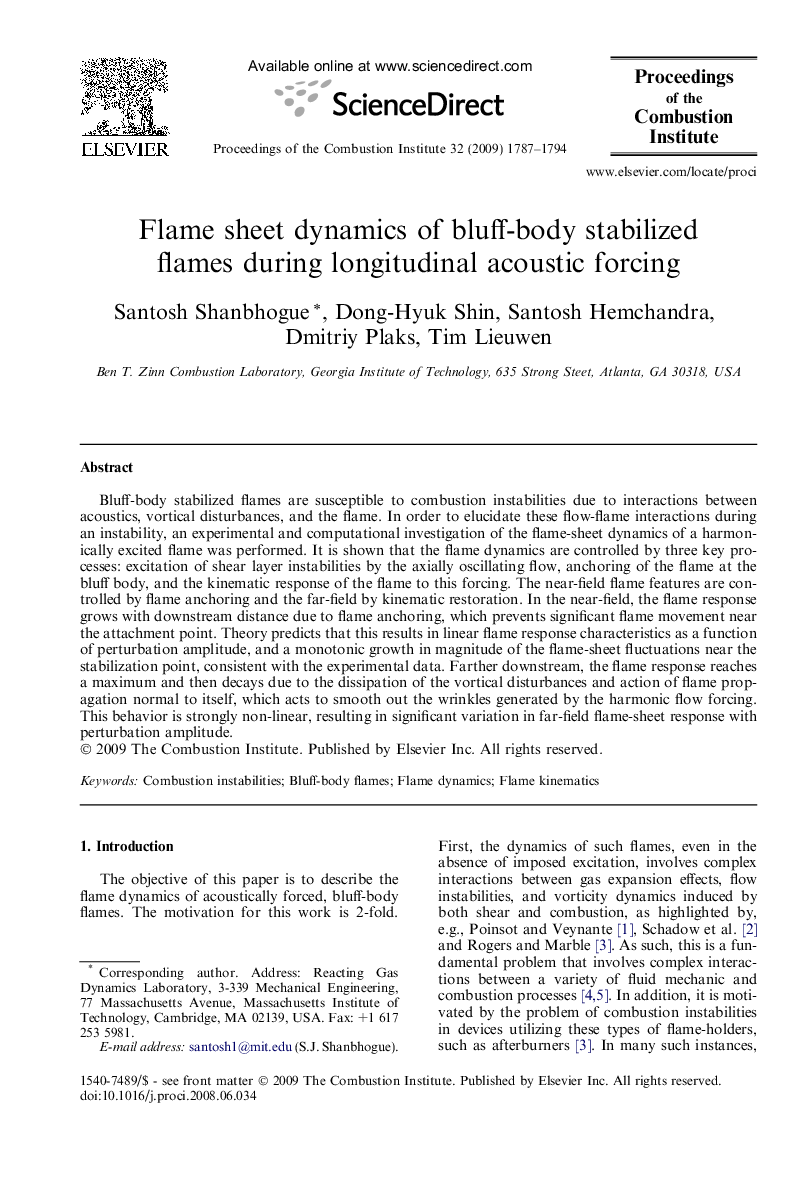| Article ID | Journal | Published Year | Pages | File Type |
|---|---|---|---|---|
| 241027 | Proceedings of the Combustion Institute | 2009 | 8 Pages |
Bluff-body stabilized flames are susceptible to combustion instabilities due to interactions between acoustics, vortical disturbances, and the flame. In order to elucidate these flow-flame interactions during an instability, an experimental and computational investigation of the flame-sheet dynamics of a harmonically excited flame was performed. It is shown that the flame dynamics are controlled by three key processes: excitation of shear layer instabilities by the axially oscillating flow, anchoring of the flame at the bluff body, and the kinematic response of the flame to this forcing. The near-field flame features are controlled by flame anchoring and the far-field by kinematic restoration. In the near-field, the flame response grows with downstream distance due to flame anchoring, which prevents significant flame movement near the attachment point. Theory predicts that this results in linear flame response characteristics as a function of perturbation amplitude, and a monotonic growth in magnitude of the flame-sheet fluctuations near the stabilization point, consistent with the experimental data. Farther downstream, the flame response reaches a maximum and then decays due to the dissipation of the vortical disturbances and action of flame propagation normal to itself, which acts to smooth out the wrinkles generated by the harmonic flow forcing. This behavior is strongly non-linear, resulting in significant variation in far-field flame-sheet response with perturbation amplitude.
